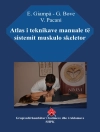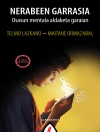Humans’ development of literacy has been a recent focus of intense research from the reading, cognitive, and neuroscience fields. But for individuals who are deaf—who rely greatly on their visual skills for language and learning—the findings don’t necessarily apply, leaving theoretical and practical gaps in approaches to their education.
Assessing Literacy in Deaf Individuals: Neurocognitive Measurement and Predictors narrows these gaps by introducing the VL2 Toolkit, a comprehensive test battery for assessing the academic skills and cognitive functioning of deaf persons who use sign language. Skills measured include executive functioning, memory, reading, visuospatial ability, writing fluency, math, and expressive and receptive language. Comprehensive data are provided for each, with discussion of validity and reliability issues as well as ethical and legal questions involved in the study. And background chapters explain how the Toolkit was compiled, describing the procedures of the study, its rationale, and salient characteristics of its participants. This notable book:
Describes each Toolkit instrument and the psychometric properties it measures.
Presents detailed findings on test measures and relationships between skills.
Discusses issues and challenges relating to visual representations of English, including fingerspelling and lipreading.
Features a factor analysis of the Toolkit measures to identify underlying cognitive structures in deaf learners.
Reviews trends in American Sign Language assessment.
Assessing Literacy in Deaf Individuals is an essential reference for researchers, graduate students, clinicians, and other professionals working in the field of deafness and deaf education across in such areas as clinical child and school psychology, audiology, and linguistics.
Tabela de Conteúdo
Preface.- Section I. Rationale and Participant Characteristics.- Chapter 1. The “Toolkit Project”: Introduction.- Chapter 2. The VL2 Toolkit Psychometric Study: Summary of procedures and description of sample characteristics.- Section II. Cognitive Functioning.- Chapter 3. Measures of General Cognitive Functioning.- Chapter 4. Measures of Visuospatial Ability.- Chapter 5. Measures of Memory and Learning.- Section III. Academic Achievement.- Chapter 6. Measures of Reading Achievement.- Chapter 7. Measures of Writing, Math, and General Academic Knowledge.- Section IV. Linguistic functioning.- Chapter 8. Measures of Expressive Language.- Chapter 9. Measures of Receptive Language.- Chapter 10. Fingerspelling.- Chapter 11. Issues and Trends in Sign Language Assessment.- Chapter 12. Analysis of Responses to Lipreading Prompts as a Window to Deaf Students’ Writing Strategies.- Section V. Further Analyses and Translational Implications.- Chapter 13. Underlying Neurocognitive and Achievement Factors and Their Relationship to Student Background Characteristics.
Sobre o autor
Donna Morere, Ph.D., has been involved in the field of deafness since 1986. She has been a faculty member in the Clinical Psychology Program at Gallaudet since August, 1990. She is the Neuropsychological Assessment Director for the VL2 Psychometric Toolkit Study and Early Education Longitudinal Study (VL2EELS). Dr. Morere also maintains a private practice in Clinical Neuropsychology providing services to individuals who are deaf or hard of hearing using ASL, Cued Speech or Oral communication. Since the early 1990s, the focus of this practice has been children with complex special needs, primarily those affecting language development. Dr. Morere’s research interests include primary language disorders in deaf children, adaptation of neuropsychological assessment instruments for use with deaf and hard of hearing individuals, cognition and memory, executive functioning and attention disorders, and reading and language development in deaf children.
Thomas Allen, Ph.D., is the Founding Director of the VL2 Center and currently serves as its Co-Principal Investigator. He holds a faculty appointment in the Department of Educational Foundations and Research, where he has taught courses in statistics and research design. Dr. Allen formerly served a 9-year term as Dean of the Graduate School at Gallaudet. Prior to becoming Dean, Dr. Allen was the Director of the Gallaudet Research Institute, where he conducted or supervised many large-scale statistical studies of the deaf population in the United States. These included an annual survey of deaf and hard of hearing children and youth and two national efforts to develop norms for standardized achievement tests for the population of deaf and hard of hearing students. He designed and conducted studies of national patterns of classroom communication strategies for deaf and hard of hearing students, and a longitudinal study of school to work transition for students who are deaf. As the Dean of the Graduate School, Dr. Allen has implemented Ph.D. programs in Linguistics and Audiology, an Au.D. professional doctorate in Audiology, a Masters of Arts in Teaching that focuses on preparing teachers to work in bilingual ASL-English environments, a Master of Arts degree in International Development, and a Master of Arts degree in Deaf Studies. He currently is the lead investigator for a several ongoing research projects at the Visual Language and Visual Learning (VL2) Center at Gallaudet University.












